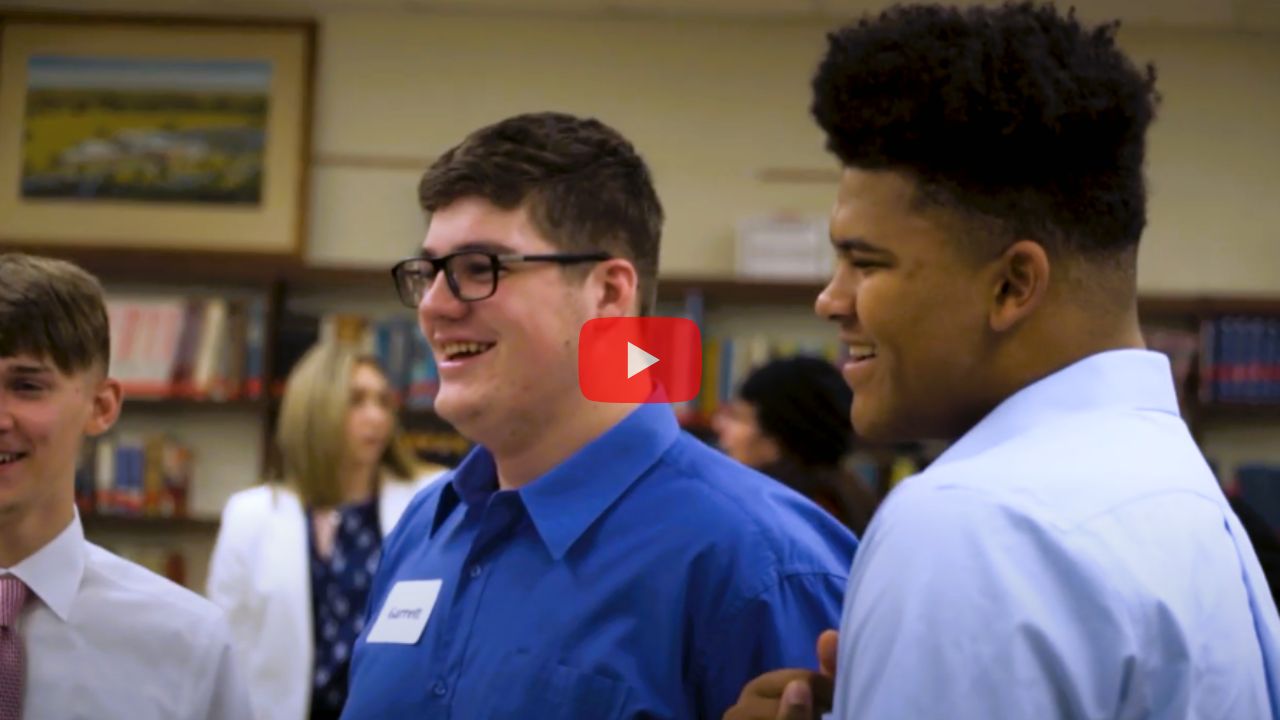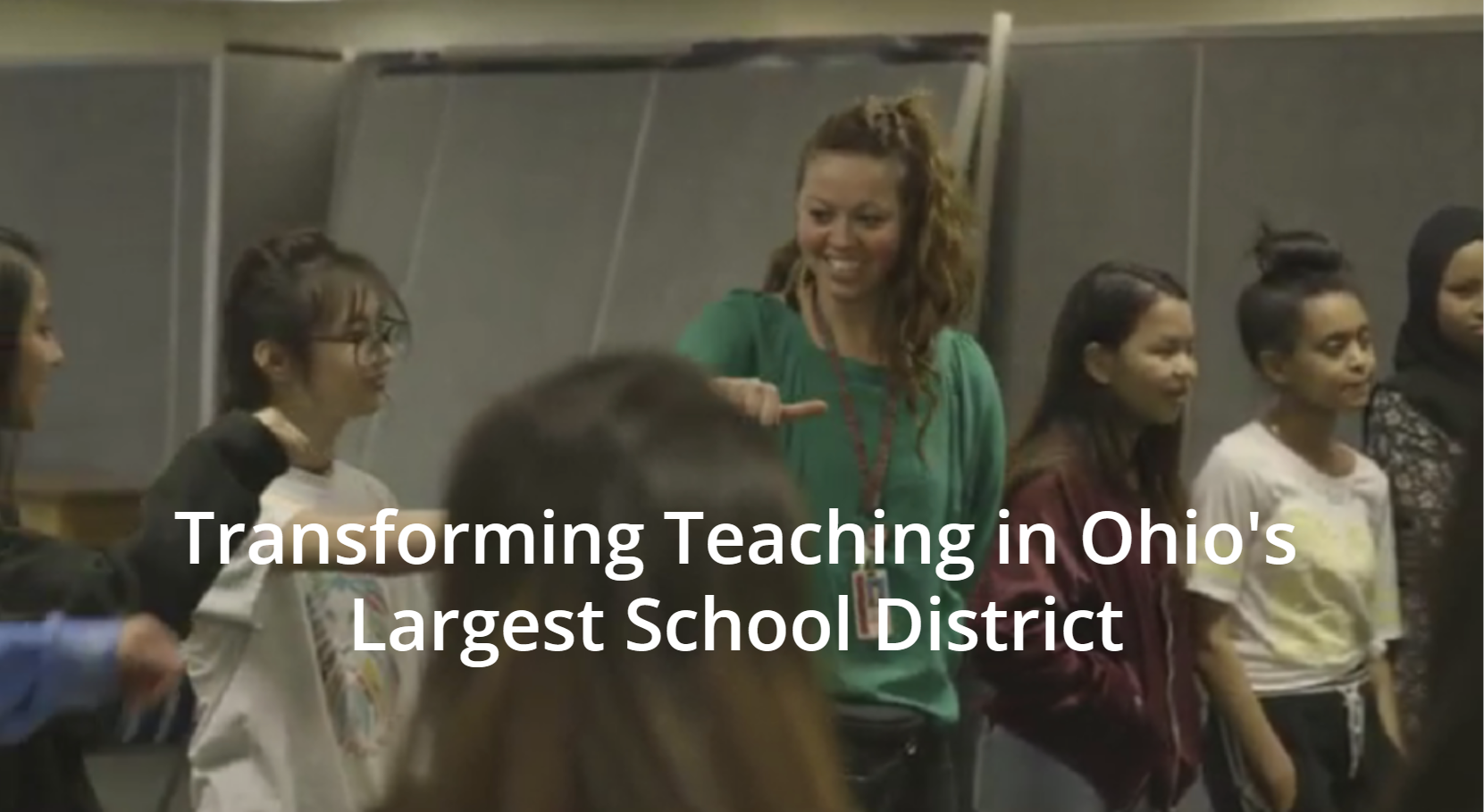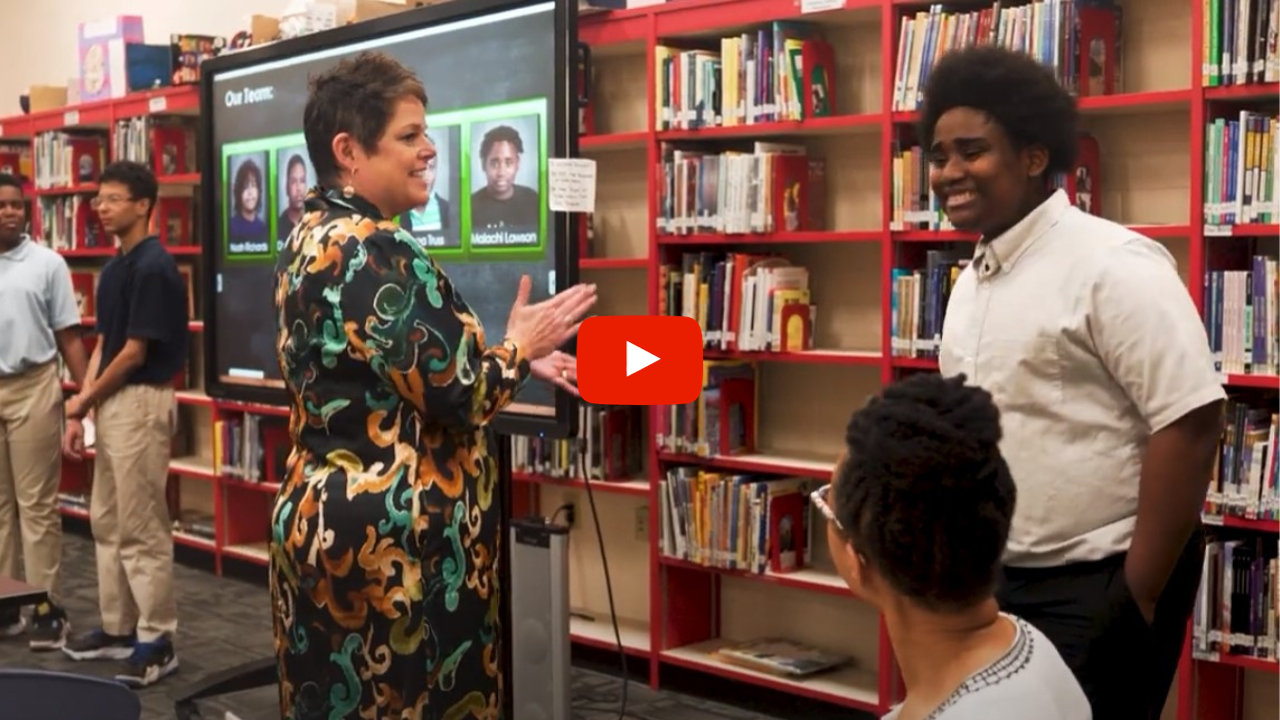In this episode, Doris describes the Entrepreneurial Studies class offered at Hawken School. She explains the role of real business problems in addition to the “final project” and how this highly developed curriculum fosters real-world skills in students.
Alison: So Doris, can you tell me a bit about the current course?
Doris: Sure, this semester course that we’re teaching. Yes. The basic structure is that we find three businesses with real and urgent startup kind of problems who are willing to let a bunch of high school kids work on it. Each student in this class will work on three problems that real businesses provide.
So they work on business 1. Day one they’re introduced to the business and the challenge. Three weeks later or whatever, depending on how you’re structuring the class—we’ve taught this in many different forms. Currently, three weeks later, they’re going to present with their team their solution to that business, then after that, pretty much the next day they meet business 2, presented with business 2 challenges.
They’re put on a different team three weeks later. That team presents their solution to the business. Then when that’s done, business 3 and three weeks later, again a new team. Three weeks later, they present their solution to that business and then in the final few weeks of the course, they will come out of business 3 having learned a lot.
They cover a huge amount of learning terrain over the course of those three business problems. They’ll come out of that and they’ll come up with a problem they want to solve and create a business model that they present in the last part of the class. In the last part of the class, when they choose problems they want to solve, the students vote. The top vote getting problems, those students will then form their own teams for the first time and they’ll present their solutions at the end of the course.
So here’s what happens. The problems, they get successively more challenging. As I mentioned, they cover a lot of learning terrain in the process. When the students get to the last part of the class where they’re choosing their own problems they want to solve and creating models to solve them, they’ve already learned so much from working on the business problems earlier in the class that what they come up with is much more sophisticated than it would be otherwise.
Alison: I think that is an interesting point and certainly a point of distinction because that sequencing of the businesses up front where you’re very mindful of what business 1’s challenge is going to be and then business 2 being a little bit more challenging or diving deeper into some specific concepts. By the time you get to business 3, they’re feeling a little more savvy. But to then at the end of the course, dive into their own projects where I know a lot of entrepreneurial programs or even a startup weekend begin there.
Doris: That’s right.
Alison: If you want to speak a little bit more about how you’ve sequenced that or why it matters.
Doris: Yeah. What you were saying is exactly right. So I’m very deliberate about not only what the problems are that we’re giving the students but also the sequencing of them and the challenge. Those problems provided by real businesses have some constraints around them because it’s a real business. It has a specific mission, specific products or services. There’s a market to define for an existing product or service.
Students learn things like how to do good research, problem solving with a manageable problem, how to segment. They learn what good data means with already a constructed, specific problem that they’re working on.
As I mentioned earlier, we’ve really developed some very, very guided curricular things for these various problems and what they do with business 1 is different from business 2 and business 3. When you’re teaching a course where students are developing these kinds of skills, you really have to be very mindful about when you’re structuring the curriculum and the class about where they are in their development of these skills.
In the first business problem, and you saw this teaching with us this past semester, in the first business problem, you’re really teaching them very, very basic foundational things. So you have to understand what those things are, where the students are coming in the door. What’s not only possible but actually realistic for them to accomplish in developing these skills in the first three weeks of a course. You have to really be mindful of all that.
All these things mean that during the course of working on these first three businesses, you have real objectives about where the students are at the end of those three in problem solving ability, market research, communications, some of their quantitative analysis, their analytical skills, etc. So what the end product in the last part of the class, when they’re going to be building their own businesses, you know what is reasonable to expect them to accomplish in the last part. You know what they’ll have as skills going in.
If the entire class is, “choose a problem you care to solve and build a business model and away you go,” they have no real context and they don’t have any foundational skills coming in. They’ll have a great experience. They’ll learn a lot of things, but the real depth of learning that happens here, it’s crazy-powerful what they learn in terms of how to do good research, what good data means, how to present well. It’s crazy-powerful. That comes from having worked on very specific things and having to deliver quality results.
On the point of quality, if you have a real business with a real problem, and they always are, they’re real problems that the CEO is losing sleep about right then and there. Students coming in with a solution at the end of it, if it’s shallow or it’s not evidence based or they haven’t done their homework in specific areas, it totally shows. There’s no hiding from it.
So having problems that they work on earlier, that have real specific content. One of the problems in one of the classes was Genomoncology. Now, did they have to become geneticists in three weeks? Of course not. I’m very careful about these problems.
I’ve spent a lot of time thinking about and analyzing how that problem, what the path is going to be, the learning path of a student working on that problem in three weeks. With other teachers we’ve worked with who don’t have as much time as we have or who are teaching something else in a different space, it might be five weeks, the time doesn’t matter, but a unit, a problem.
They’re going to have to learn some level, some degree of content in order to be able to solve that problem. You cannot completely separate content from knowledge, from skill development. When the only thing a student does in an entrepreneurship class is come up with a problem they want to solve and then create a business model to solve it, I don’t even know. It’s so hard for me to articulate how different that is. They don’t have the richness of knowledge they have to gain in the course of . . . does that make sense?
Alison: Absolutely. I even think about in my own experiences taking some entrepreneurial classes but then also out in the field working with the entrepreneurs that we did work with abroad. If there isn’t any background and you’re coming in completely blind, you have nothing to relate that to. I can really see with this course that because the students are fostering the skills, and the first time out of business 1, they really are doing very deep research.
Doris: And that’s true every semester.
Alison: And I think it’s actually wonderful and part of the magic of this that every time another business happens in the course, it’s another opportunity for them to fail in a safe space where they realize, “Wow, that data wasn’t good enough, actually.”
Doris: Right.
Alison: “We didn’t have enough sample size to base any of our decisions on. Let’s go again. Business two, let’s try it again.” And I feel like by the time they get to the final project where they’re developing their own, they are feeling more confident about the actual problem solving process, how you go about solving that in a meaningful way that will create some kind of solution people care about.
Doris: Right.
Alison: Are there any specifics with regards to the businesses and the students working on the real problems that shift how the course moves?
Doris: Oh my gosh. It’s huge. So it’s the content itself that’s different. So if they’re working on Genomoncology, they’re steeped for three weeks in the world of genetic science. It’s a very, very different thing than if they’re working with Rustbelt Reclamation and they’re worrying about the environment, the ecology, reclaimed wood, the dynamics. So the subject matter itself is very different.
In our case in this course, this time, because it’s an entrepreneurship class, we have the flexibility to choose whatever businesses with whatever attending content we want. If I’m teaching a science class, as the teacher I talked to last week, they had specific things, content knowledge, they want their students to learn. So you choose the problems differently because the learning objective is that the students come out with a working knowledge of whatever it is.
Alison: Water filtration or . . .
Doris: Yeah, or some fundamental chemistry or whatever it may be. But along the way in that science class, they’re not only going to learn the chemistry that they need to learn in their sophomore year, but they’re also going to learn a lot of skills as well. That’s really what we’re talking about is a different model of education.
That’s really what we’re talking about. We’re not talking about, “Oh, you’re teaching entrepreneurship.” We’re talking about doing school better. How should we construct school so that we’re preparing students for the world they’re entering? Is there knowledge they need to learn along the way? Yes. Are you going to make sure that every student by the time they graduate has learned well all these different subject areas? We’ve never figured out how to do that. We’re still not.
But instead of all the churning and conversation and work being, “Let’s redo the table of contents of what topics I cover,” okay? You and I are both, we’re both teaching American Literature and let’s spend all of our time together arguing about which specific books in all of American literature we’ve got for students in their sophomore year. We are going to spend all of our energy arguing about which books we’re going to choose for them to read that matter most in all of American literature.
So instead of that . . . and there’s nothing wrong with the books that we come up with and there’s nothing wrong with discussing that, of course. But the whole dynamic of teaching and education in school has been entirely focused on content, specific content in this fantasy that if we only choose the right content, everybody will be fine. It’s completely disconnected from the reality of the world these kids are going into.
Alison: Right.
Doris: What they need now are skills. They need lots of knowledge and they need to know how to learn the knowledge. When they graduate from school and they’re in something and they never learned chemistry that deeply and now they need it, they know how to learn it and they’ll learn it.
Alison: Right. It’s that self-awareness piece of understanding the type of learner you are, but also how to really be active in the learning process.
Doris: It’s about learning how to learn well.
Alison: And stepping into that to know that it’s not just passive learning that most of us have had our entire life or the first 18 years. Now they’re really given an opportunity to step into it themselves. The students in this course that has been designed at the high school level, but is this more broadly applicable? Is this being applied . . . ?
Doris: Oh, all over. In all different kinds of things. It’s a model of education, not an entrepreneurship class.







